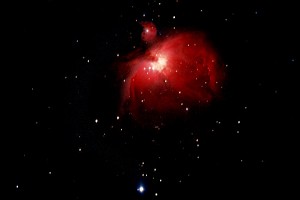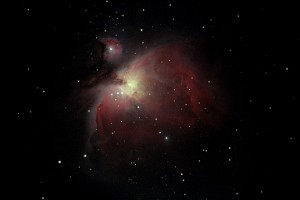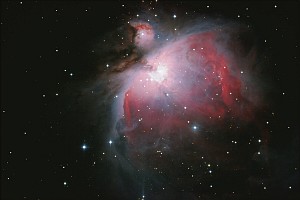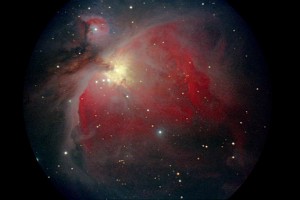
m42b-768

M42 (Film)
Object: M42 Date: December 9, 2001 Exposure: 2x 35Min Film: Kodak LE400 Equipement: 10" Meade SCT OTA w/GEG at f/7.5 on Losmandy G-11 Guiding: ST-4 (A3's) Hardware & Software: Multiple scans were created with my HP S20xi film scanner and Hamrick's vuescan software. The scans were registered using Registar. The registered "48 bit" images were processed and stacked using Picture Window 3.1d. Info: M42, also called the the Orion Nebula is the most famous nebula in the sky and the most photographed. I was fairly please with this image. I finally got the focus right and I was happy that I was able to extract so much detail from two 35 minute exposures taken under 4.0 mag skys. Click on the image for an older exposure of the same object.

M42 - The great Orion Nebula
Objects: M42 Location: "My-Spot" Observatory, West Bloomfield, Michigan (≈4.1 ZLM) Date: September 30, 2009 Exposure(s): 42x 4 Sec, 41x 15 Sec, 36x 60 Sec, 1x 240 seconds, 31x 360 seconds (80 Darks, 133 Flats) Camera: Hap Griffin Modified Canon Rebel XT (350D) Scope: Vixen VC200L w/FR Guiding: ST-4 thru Modified Meade ETX-90 OTA Stacking and Processing: Deep Sky Stacker and Picture Window Pro This image was made with the assistance of my friend Klaudio Todi.

m42c-768
Object: M42 & M43 Date: December 9, 2001 & February 17, 2002 Exposure: 4x 35Min & 2x 20Min Film: Kodak LE400 Equipement: 10" Meade SCT OTA w/GEG at f/7.5 on Losmandy G-11 Guiding: ST-4 (A3's) Hardware & Software: Multiple scans of each exposure were created with my HP S20xi film scanner and Hamrick's vuescan software. The scans were registered and stacked using Registar. The resulting image was processed using Picture Window 3.1f. Image Info: I am becoming more pleased with this image as it developes. Also I'm proving a hunch that one can extract a lot of information out multiple exposures when taken under 4.0 mag skys. I figure that if the CCD folks can do it, I should be able to also, just not as quickly. There is a lot of grain that seems to be visible in the image, undoubtably a result of the processing involved in dealing with the light pollution. The round cropping is a lame attempt to cover over the fact that the setup was so badly vignetted that it was beyond repair (at least I find it less distrubing this way). Click on the image for an older exposure of the same object.